Updated: 10 November 2024 by Sylwia (MyCrochetory)
Want to start crocheting? Learn beginning crochet stitches and try simple projects in this easy guide, perfect for new crocheters!
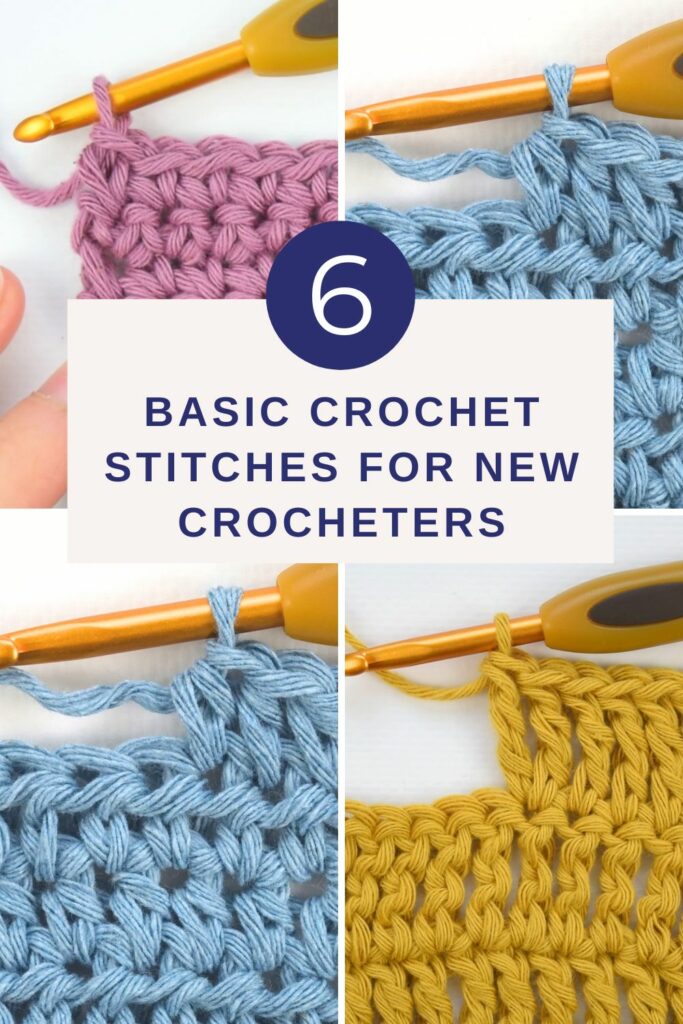
Hey there, future crocheter! If you’re here, you’re probably curious about crochet, and you’re in exactly the right place.
Crochet is such a relaxing way to create beautiful, handmade pieces with just a hook and some yarn. I’ll walk you through the essential beginner crochet stitches, plus show you a few easy projects to get you going.
And don’t worry, I’ve included links to a helpful video tutorial for each stitch to make things even easier.
In this guide, I’ll cover all the basics: simple stitches, tools, techniques, and a few troubleshooting tips. By the end, you’ll feel ready to pick up your hook and dive right into your first crochet project. Let’s get started!
Essential Tools and Supplies for Crochet Beginners
Before we jump into stitches, let’s make sure you have the right tools. Having the right supplies can make a big difference in your crocheting experience.
1. Choosing the Right Yarn
For beginners, go with a smooth worsted weight yarn (often marked as “medium weight” or “#4” yarn on the label). This weight isn’t too thick or too thin, making it easier to see each stitch.
Worsted weight yarn is great for practicing because it doesn’t get tangled easily, and it’s suitable for a wide range of projects.
Choose a color that’s light or medium (like soft blues or grays), as darker yarns make it harder to see individual stitches.
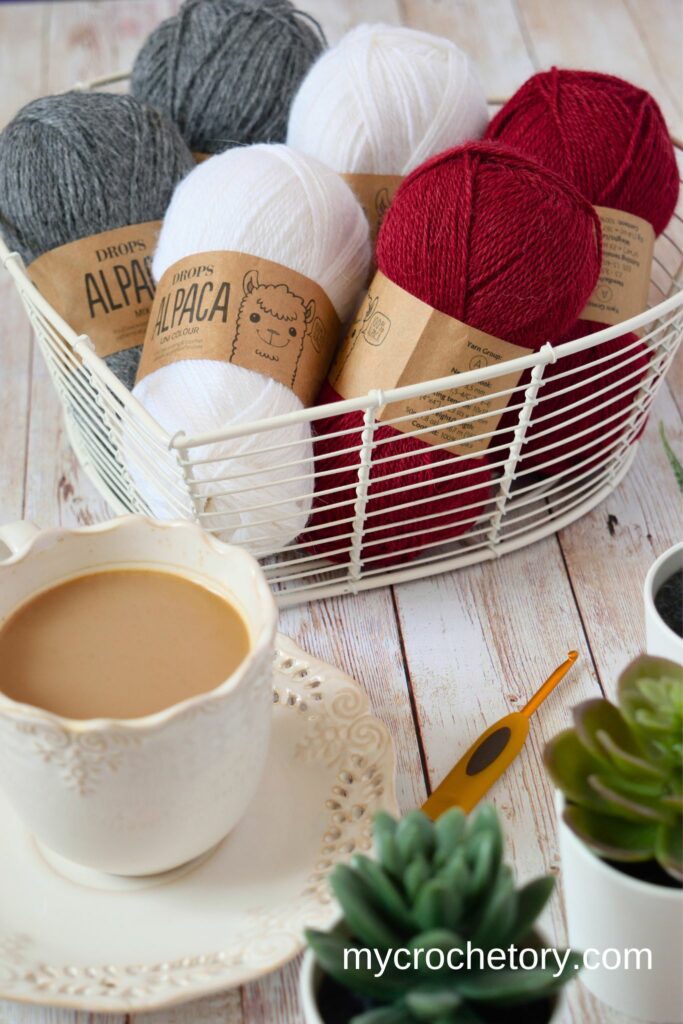
Types of Yarn Fibers
When you’re first starting out, cotton and acrylic yarns are excellent beginner options.
Cotton yarn is soft, doesn’t stretch, and holds its shape, which is great for making sturdy projects like coasters, bags, or dishcloths.
Acrylic yarn, on the other hand, is soft, budget-friendly, and versatile. It’s also easy to wash, which is perfect for beginner projects like scarves, hats, and blankets.
Understanding the Yarn Label
Yarn labels contain important information, like yarn weight, fiber type, recommended hook size, and care instructions.
Learning to read the label ensures your crochet project will look as intended and be easy to care for.
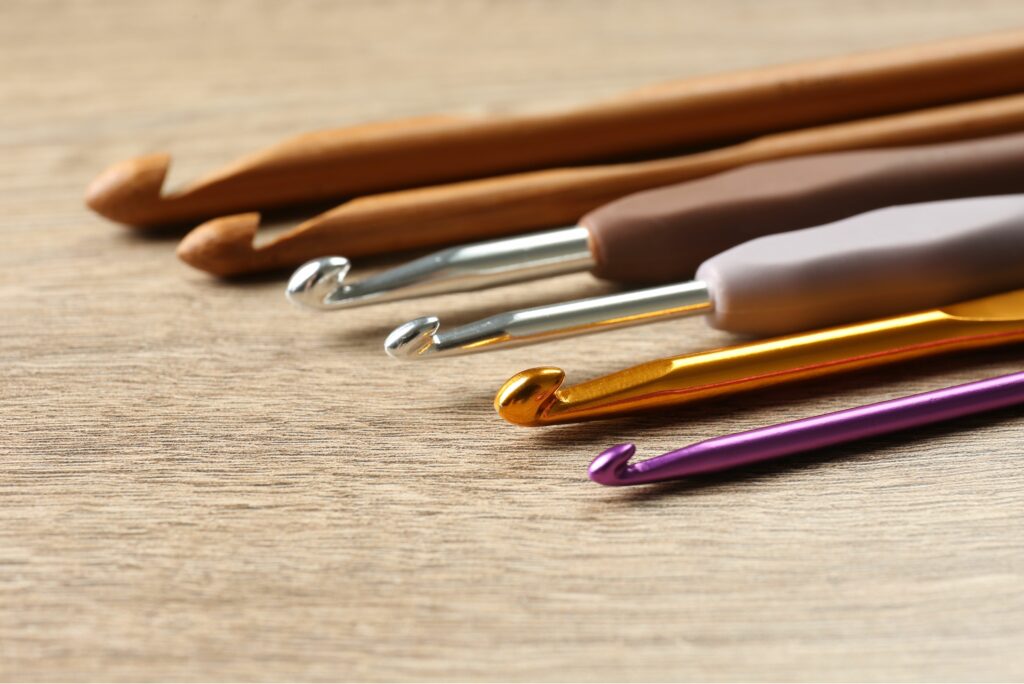
2. Choosing Your First Crochet Hook
If you’re just starting out, a 5mm (size H) crochet hook is a great choice. It’s easy to handle and works well with medium-weight yarn, which is a good place to begin as you’re learning the basics.
Different Types of Crochet Hooks
Crochet hooks come in a few different materials, each with its own feel:
- Aluminum hooks are light, affordable, and let the yarn slide smoothly over the hook, which makes them popular with beginners.
- Bamboo hooks are eco-friendly, feel warm to hold, and have a slight grip, which can help you keep your stitches more even.
- Ergonomic hooks have soft handles that make them easy on your hands, especially if you’re crocheting for longer stretches.
Finding the Right Hook Size
Crochet hook sizes are measured in millimeters. For medium-weight yarn, most people use a hook between 5mm and 6.5mm. If you feel like your stitches are too tight, try a slightly larger hook to loosen them up. If they’re too loose, a smaller hook will help tighten them.
Experiment a bit to find what feels best for you – crocheting should be comfortable and fun!

3. Stitch Markers and Row Counters
For new crocheters, stitch markers are super helpful! They’re great for marking the first stitch and last stitch of each row, which helps you keep the right number of stitches and avoid accidentally adding or missing any.
This little trick makes a big difference, especially when you’re just starting out.
A row counter is also a handy tool. It helps you keep track of how many rows you’ve done, which is helpful for patterns with a specific number of rows. You can use a digital or manual counter, or just jot down your rows in a notebook as you go.
This way, you’ll always know right where you left off!

4. Scissors and Tape Measure
A small, sharp pair of scissors is handy for trimming yarn ends, while a tape measure helps check the size of your project. This is particularly useful when making items like hats or scarves where specific dimensions matter.
Getting Started: The Slip Knot and Foundation Chain
Every project begins with a slip knot and a foundation chain. Here’s how to make each one.
- Making a First Slip Knot: The slip knot secures the yarn to your hook and creates your starting point. Hold the working yarn (the yarn connected to the skein) in one hand, make a small loop, and pull a piece of yarn through to form a knot. Insert your hook and gently pull to tighten.
- If you need more help, check out How to Make a Slip Knot for Beginners.
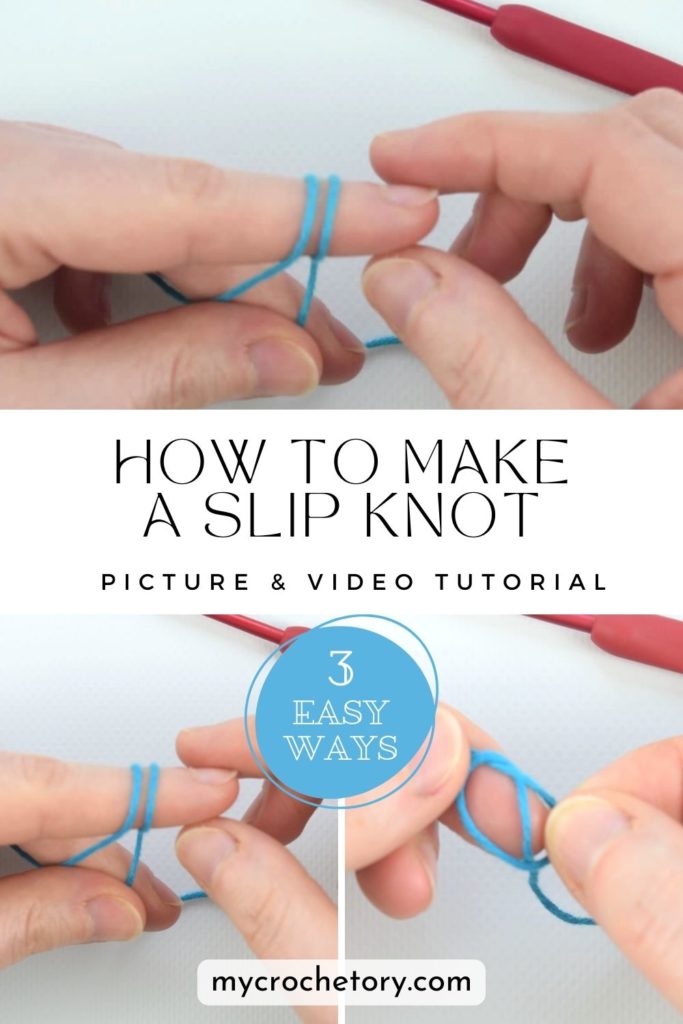
2. Foundation Chain: The foundation chain (also called the starting chain) is the base of many crochet projects. It’s a series of chain stitches that you’ll build on with other stitches. Here’s a step-by-step guide:
- How to Make a Foundation Chain:
- Start with the slip knot on your hook.
- Yarn over and pull through the loop to create a chain.
- Repeat for the desired number of chains.
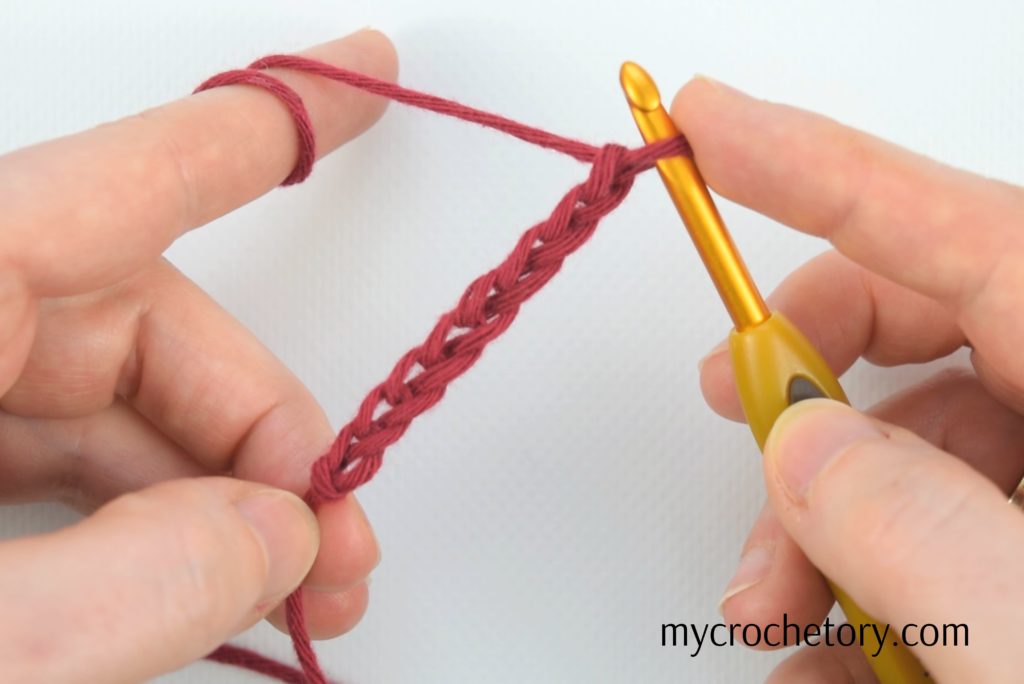
If your chain looks uneven, don’t worry – that’s very common for beginners. With practice, your chains will become more consistent!
If you need more help, check out How to Crochet a Chain.
Mastering the Basic Crochet Stitches
With your foundation chain in place, let’s move on to basic stitches that will lay the groundwork for all sorts of projects. These stitches are the building blocks of crochet, so once you’re comfortable with them, you’ll be able to try out more advanced projects!

1. Single Crochet Stitch (sc)
The single crochet stitch is compact and dense, perfect for projects that need durability like dishcloths and blankets. Check out How to Single Crochet Stitch (sc) for Beginners for a full tutorial.
- How to Single Crochet:
- Insert your hook into the second chain from the hook.
- Yarn over, pull through the chain to create a new loop (two loops on the hook).
- Yarn over again and pull through both loops.
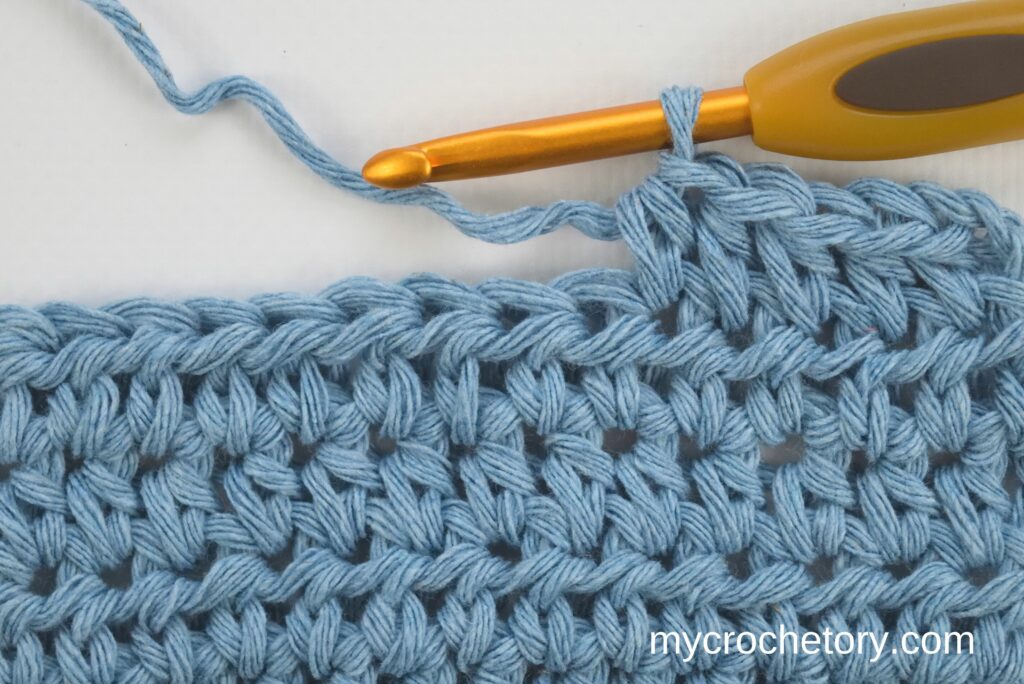
2. Half Double Crochet Stitch (hdc)
The half double crochet stitch has a little extra height and a looser feel, which makes it ideal for soft items like scarves and shawls. Check out How to Half Double Crochet for a full breakdown.
- How to Half Double Crochet:
- Yarn over, insert hook into the next stitch.
- Yarn over, pull through (three loops on the hook).
- Yarn over and pull through all three loops on the hook.
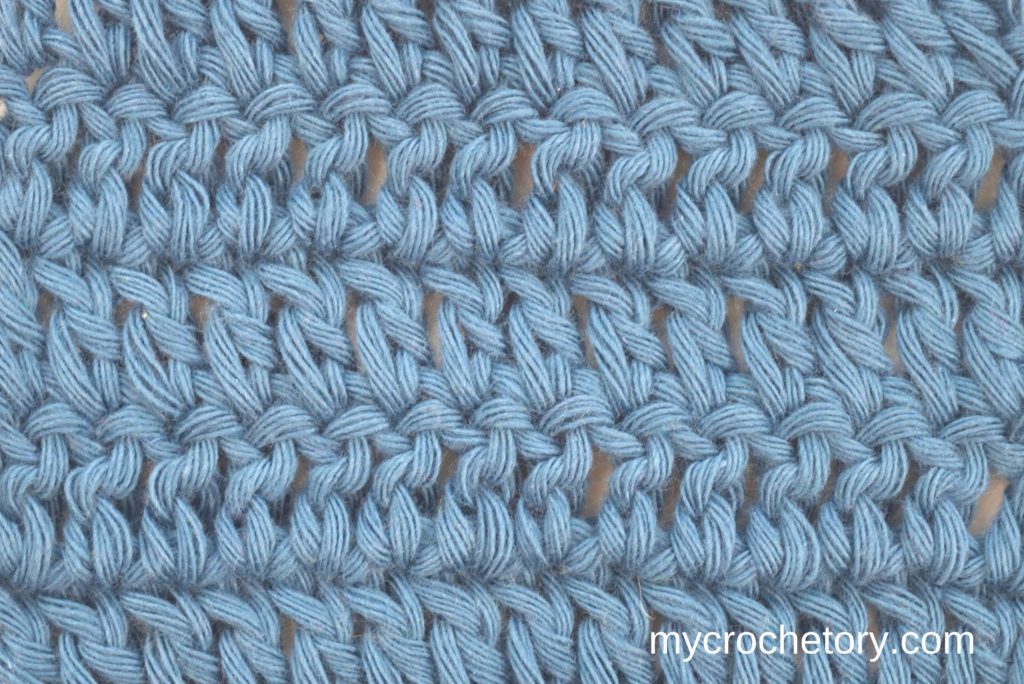
3. Double Crochet Stitch (dc)
The double crochet stitch is versatile, with more height and an airy feel that’s great for lacy designs. For more help, see How to Double Crochet.
- How to Double Crochet:
- Yarn over, insert your hook into the next stitch.
- Yarn over, pull through (three loops on hook).
- Yarn over, pull through two loops, then yarn over again and pull through the last two loops.
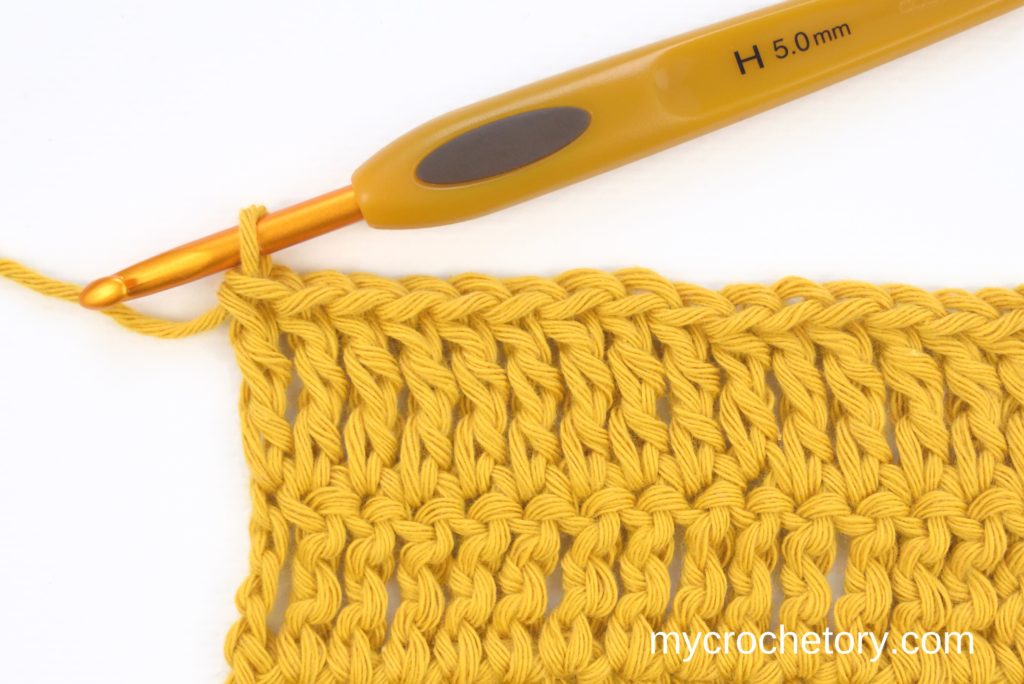
4. Treble Crochet Stitch (tr)
The treble crochet stitch, also known as a triple crochet stitch, is one of the taller stitches, making it perfect for airy, open designs like shawls.
Find the tutorial at How to Treble Crochet Stitch for Beginners.
- How to Treble Crochet:
- Yarn over twice, insert the hook into the next stitch.
- Yarn over, pull through (four loops on the hook).
- Yarn over and pull through two loops at a time until only one loop remains.
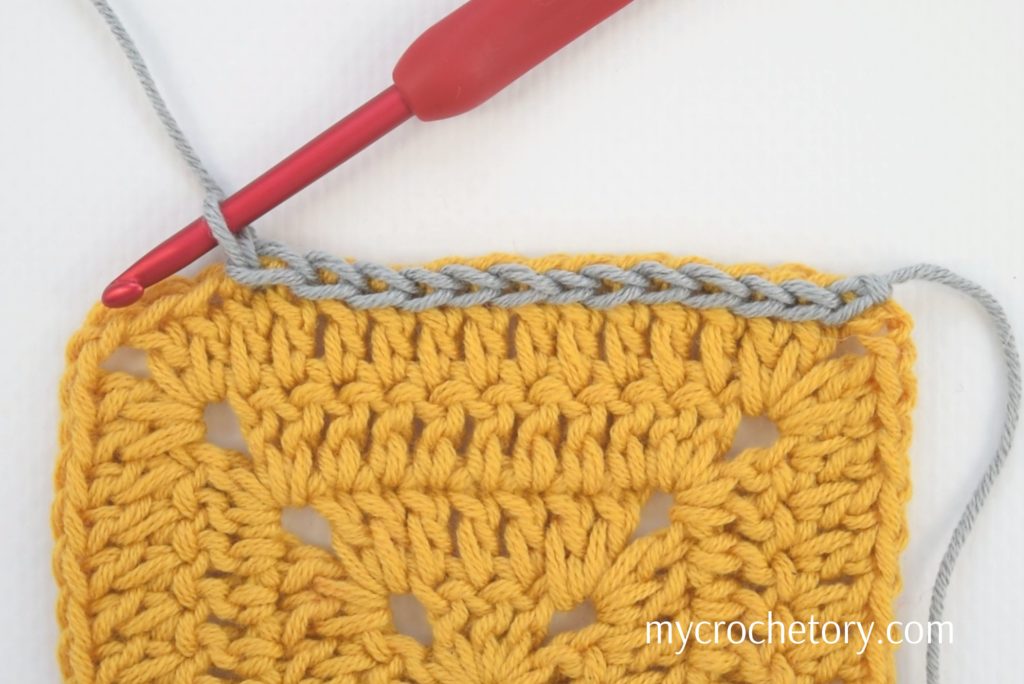
5. Slip Stitch (sl st)
The slip stitch is great for joining pieces, finishing edges, and adding decorative details. Here’s a full tutorial: How to Slip Stitch in Crochet.
- How to Slip Stitch:
- Insert the hook into the next stitch.
- Yarn over and pull through both the stitch and the loop on your hook.
Crochet Abbreviations and Pattern Basics
One of the first things you’ll notice in crochet patterns is the use of abbreviations.
It can look a bit like a secret code at first, but don’t worry – these abbreviations are super helpful and easy to pick up as you go!
Here’s a quick guide to some of the most common ones:
- ch = chain
- sc = single crochet
- hdc = half double crochet
- dc = double crochet
- tr = treble crochet
- sl st = slip stitch
You’ll also see symbols like asterisks or parentheses. These just show sections of the pattern you’ll repeat a certain number of times – don’t let them intimidate you!
Once you start working through patterns, you’ll get the hang of it.
US vs. UK Crochet Terms
Here’s a heads-up: some patterns use US terms, while others use UK terms.
For instance, what’s called a single crochet (sc) in the US is a double crochet (dc) in UK terms.
It’s a small difference, but it can make a big impact on your project, so double-check at the start.
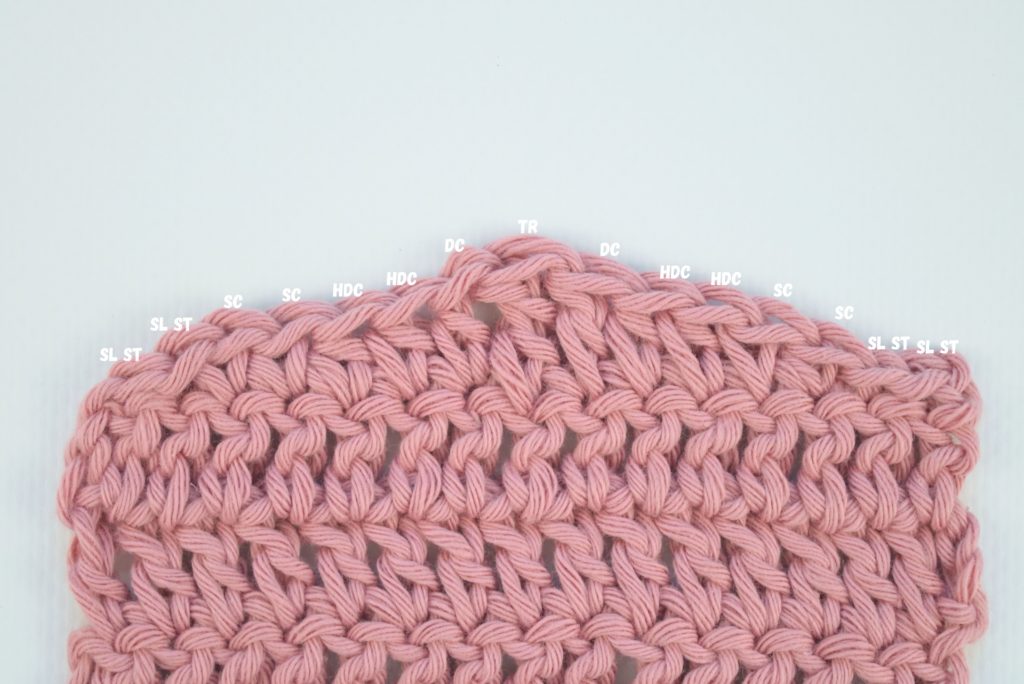
Turning Chains and Moving to the Next Row
At the end of each row, you’ll need to create a turning chain to start the next row. The number of chains depends on the stitch height:
- Single Crochet: One chain
- Half Double Crochet: Two chains
- Double Crochet: Three chains
- Treble Crochet: Four chains
Each turning chain allows the next row to match the height of the previous stitches, keeping edges even.
Extra Tips to Make Crocheting Easier
Getting started with crochet is super exciting, but let’s be real – those first few projects can come with a few bumps along the way.
One of the big things that can make your crochet look better and feel easier is finding that perfect tension (how tight or loose you hold the yarn) and knowing a few tricks to make the process smoother.
Here’s some friendly advice to help make your crochet experience a little easier and a lot more enjoyable!
Keeping Your Tension Consistent
Tension is just a fancy way of saying how snug or loose you’re crocheting.
If your stitches feel too tight, you’ll find it tricky to insert the hook, and if they’re too loose, the project might look a bit sloppy.
Don’t stress if your tension isn’t perfect right away; that’s something everyone gets better at with practice.
Try these tips to keep things consistent:
- Practice is key: Don’t worry if it doesn’t look perfect at first – each project helps you get the hang of it!
- Find a comfy way to hold your yarn: Use your non-dominant hand to guide the yarn flow, and try using your index finger or middle finger to keep it steady. This little trick can make a big difference.
- Experiment with hook size: If your stitches feel too tight, go up a hook size; if they’re too loose, try a smaller hook. It’s amazing what a small change can do!
Extra Tips for a Smoother Crocheting Experience
- Count Your Stitches
I know, counting each stitch can feel repetitive, but it’s totally worth it. A quick count at the end of each row saves you the headache of finding out later that you accidentally added or dropped a stitch. And remember, crochet is forgiving, so no worries if you miss a stitch now and then! - Be Kind to Yourself – Consistency Comes with Practice
If your stitches look a bit uneven, no sweat! It’s totally normal, and as you keep going, you’ll notice they naturally start to look smoother. Don’t worry about perfection – just focus on enjoying the process. Pretty soon, you’ll be amazed at how much more consistent your work looks! - Don’t Be Afraid to Undo Stitches
Mistakes happen, and even experienced crocheters have to “frog” (unravel) their stitches every now and then. Just gently pull the yarn back to where you want to fix things, take a deep breath, and keep going. Honestly, frogging can be oddly satisfying – it’s like a little redo button that helps you get things looking just right.
At the end of the day, crochet is all about enjoying the journey.
Every stitch, little mistake, and row completed gets you closer to becoming a confident crocheter. So don’t sweat the small stuff, enjoy each step, and most importantly, have fun with it. You’re doing great!
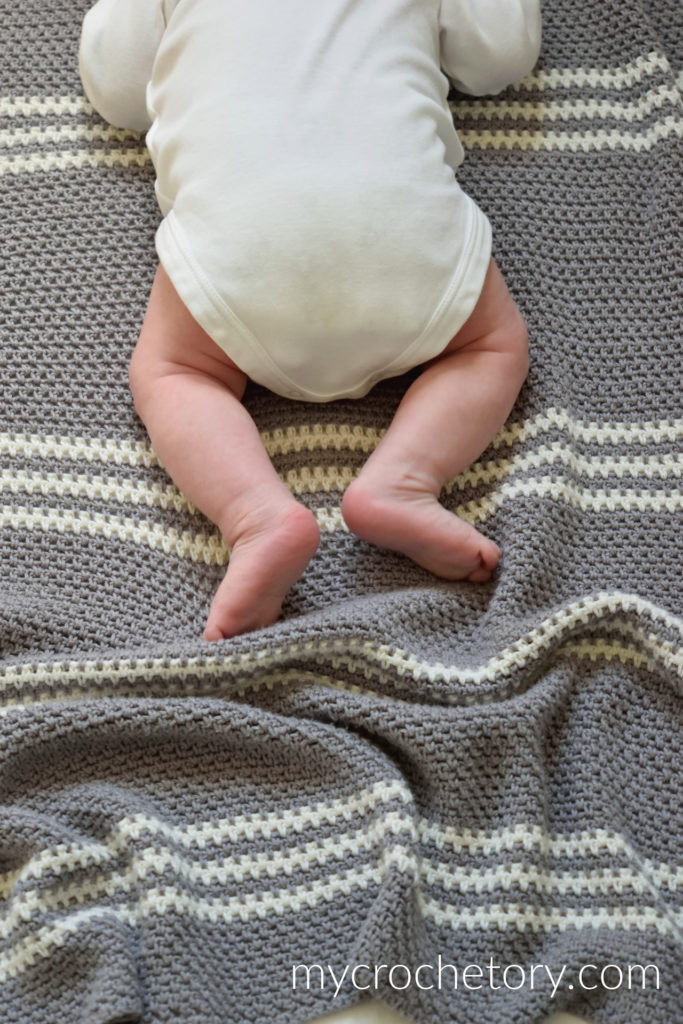
Easy Crochet Projects for Beginners
If you’re ready to put your new crochet skills to work, here are a few simple projects that are perfect for beginners.
They’re fun, quick to make, and will help you get comfortable with the basics. Plus, you’ll end up with some cute, useful items!
- Coasters – Coasters are a fantastic first project! They’re small, so they don’t take long, and they’re perfect for practicing single crochet stitches. You can make a set in different colors, try out new yarns, or play around with textures once you get the hang of it. Plus, who doesn’t love a handmade touch for their coffee table?
- Dishcloths – Dishcloths are a great next step. They’re easy to make but let you try out half double crochet stitches or even mix in other stitches for variety. Making a dishcloth also gets you comfortable with turning your work at the end of each row. The best part? You end up with something super practical that you can use in your kitchen or give as a gift!
- Blanket – Feeling ambitious? Try a simple blanket! A beginner-friendly pattern like Filip’s Easy Crochet Blanket uses only easy crochet stitches, so you can get into a relaxing rhythm and build confidence as you go. Watching your blanket grow row by row is so rewarding, and at the end, you’ll have something cozy and handmade to snuggle up with!
Each of these projects gives you the chance to practice, gain confidence, and enjoy the process of making something all your own. Just relax, keep going, and remember to have fun!
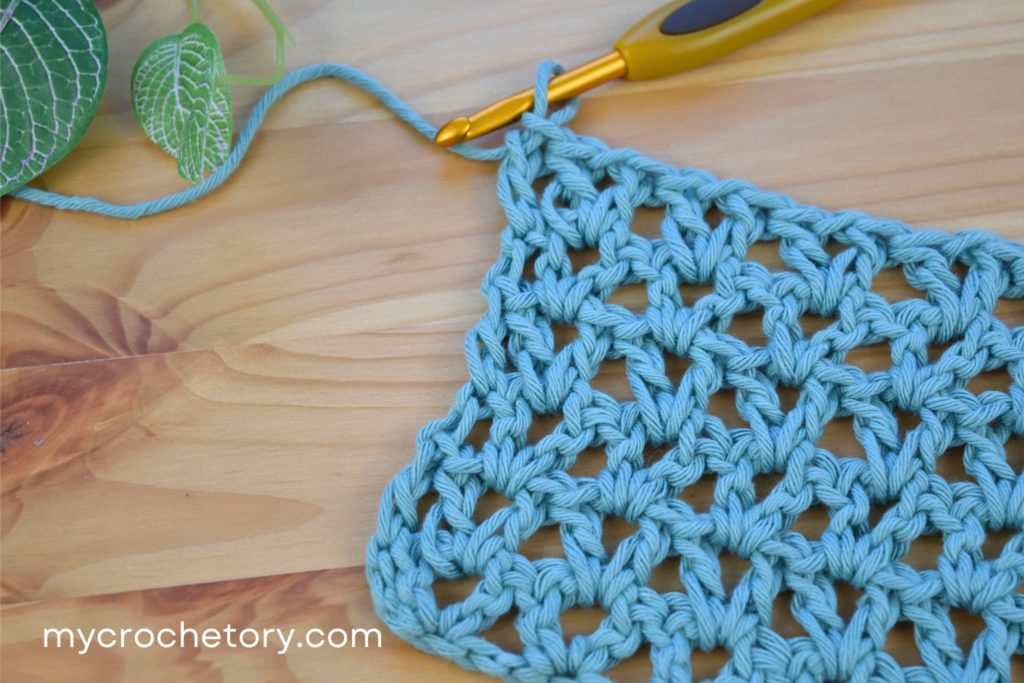
Ready to Try Something New?
Once you’re feeling good about the basics, there’s so much more you can try in crochet! Here are a couple of fun, easy ideas to add new styles and techniques to your projects:
- Add Texture with New Stitches – Want to mix things up a little? The Moss Stitch and V-Stitch are both easy to learn and add a nice bit of texture to blankets, scarves, and more. These stitches look impressive but are super simple to do. Check out the Moss Stitch tutorial here and the V-Stitch tutorial here to get started. They’re a great way to give your projects that extra “wow” factor!
- Try Working in the Round – If you’d like to make something circular, like a hat or a coaster, learning the magic circle (or magic ring) is a great first step. This technique helps you start a round project without leaving a hole in the middle, giving it a nice, tidy look. It’s easier than it sounds! Take a look at this Magic Circle tutorial to learn how it’s done.
With these new stitches and techniques, you’ll have even more options to play around with and make each project your own. So go ahead, give them a try, and see how much you can do!
MORE CROCHET TUTORIALS
If you found this guide helpful, you might also like posts:
- How to foundation single crochet
- Magic Knot for Joining Yarn
- How To Double Crochet 2 Rows at Once
- How to crochet ribbing
- Mattress stitch join tutorial
- How To Crochet an I-CORD
Don’t forget to save this Pin for easy reference: 📌
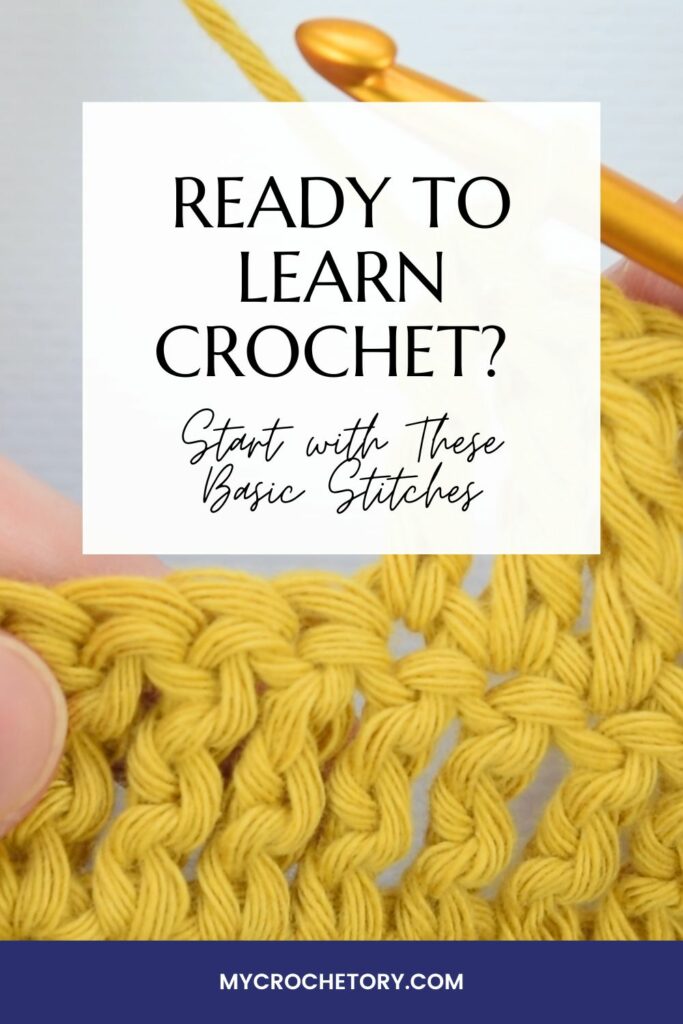
We’d love to hear about your crochet adventures and see your beautiful creations. Drop a comment below sharing your thoughts, questions, or even your favorite crochet tips! Your voice adds a vibrant thread to our crafting community.
Sharing is caring! If you found this guide helpful, consider spreading the love. Click the share button and inspire other crocheters.
Stay in the loop with our latest crochet guides, tips, and inspiration. Subscribe to our newsletter for exclusive content straight to your inbox. Never miss a stitch—subscribe today!
Happy crocheting, and may your yarn always be tangle-free!
Join my Facebook Group and Official Ravelry Group where you can find necessary support, you can ask questions or share your finished projects.
You can also follow my Instagram, Facebook page and Pinterest.
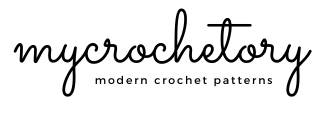
Leave a Reply